PVB interlayer film for laminated glass
1. What is PVB interlayer film?
Polyvinyl butyral, commonly known as PVB, is typically divided into resin and film. The latter, PVB film, is an industrialized product produced by the combination of polyvinyl alcohol and n-butyraldehyde.
It has two grades: film grade boasting high viscosity characterisics, and non-film grade exhibiting lower viscosity. In addition to being non-toxic, odorless and impervious to corrosion, it boasts a range of properties such as transparency, cold-resistance and impact-resistance.
Presently, its most important application is in safety glass via the use of PVB film grade.
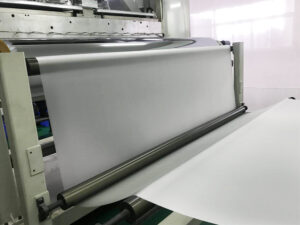
2. Uses and advantages of PVB laminated glass
Laminated glass is commonly known as safety glass.
When laminated glass is exposed to strong external impact, safety glass refers to the middle of the laminated glass. PVB film absorbs the impact energy, sticks to the glass fragments, and leaves the glass surface still clean and smooth, effectively preventing the fragments from tying on to and penetrating the falling event.
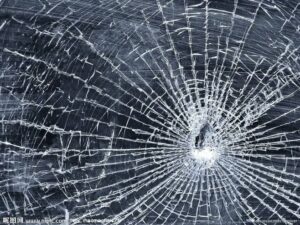
PVB film is the most widely used interlayer of laminated glass at present. PVB laminated glass has good adhesiveness, light visible transmittance, and impact resistance. It is used in building exterior walls, automotive windshields, and other places with safety requirements.
3. Specifications and classifications of PVB interlaye film
PVB can be mainly divided into architectural grade and automotive grade according to its use.
Architectural grade PVB film has better adhesion, while automotive grade PVB film has better penetration resistance.
3.1 Architectural grade PVB interlaye film
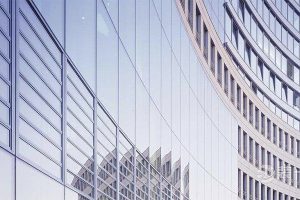
The regular thicknesses of architectural grade PVB film are 0.38mm, 0.76mm, 1.14mm, and 1.52mm.
The width can be customized according to customers’ requirements but within 3.3 meters.
Both transparent and colorful PVB films are available.
| Thickness | 0.38mm; 0.76mm; 1.14mm; 1.52mm |
| Length | 400m/roll; 200m/roll; 130m/roll; 100m/roll; |
| Width | 600-2700mm |
| Roughness Rz | 20-50 |
| Moisture content(%) | 0.35-0.55 |
| Heat shrinkage rate (60℃/15min)(%) | ≤12.0; ≤8.0; ≤6.0; ≤5.0; |
| Pummel value | ≥7 |
| Visible light transmittance (%) | ≥85(clear) |
| Haze (%) | ≤0.6(clear) |
| Tensile strength (MPa) | ≥20.0 |
| Tensile elongation (%) | ≥200 |
| Yellowness index (%) | ≤10 |
3.2 Automotive grade PVB interlayer film
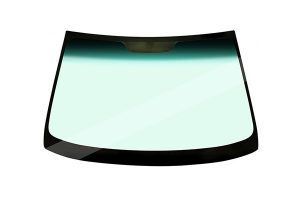
The regular thicknesses of automotive grade PVB are 0.65mm and 0.76mm.
The width can be customized according to customers’ requirements but within 3.3 meters.
Both transparent and colorful PVB films are available, furthermore, a colorful band is optional as well, which can prevent strong sunlight from dazzling.
| Thickness | 0.76mm or customized |
| Length | 200m/roll |
| Width | 600-2700mm |
| Band Width | 120-460mm |
| Color | Blue band/ Grey band/ Green band/ F-green |
| Roughness Rz | 20-50 |
| Moisture content(%) | 0.35-0.55 |
| Heat shrinkage rate (60℃/15min)(%) | ≤8.0 |
| Pummel value | 3-6 |
| Visible light transmittance (%) | ≥85(clear) |
| Haze (%) | ≤0.6(clear) |
| Tensile strength (MPa) | ≥20.0 |
| Tensile elongation (%) | ≥200 |
| Yellowness index (%) | ≤10 |
3.3 PV grade PVB interlayer film
The EVA film used in traditional photovoltaic packaging is now also used in photovoltaic laminating.
3.4 PVB functional interlayer film
All PVB films can play a certain role in sound and heat insulation. If necessary, other materials can be added to increase the sound and heat insulation function.
4. How to use PVB film to produce laminated glass
4.1 Lay the sheet of PVB film between the two pieces of glass.
4.2 Remove the air between the glasses and PVB film by rolling or vacuuming in the vacuum bag.
4.3 Put into the laminating machine (autoclave). The laminating machine will apply heat and pressure to the glass/PVB combination, which will cause the PVB film to bond the two layers of glass together and form a laminated glass.
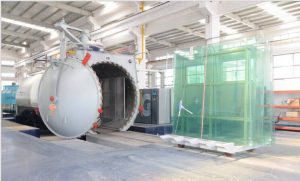
5. Comparison between PVB and other laminating interlayer
Besides PVB, EVA and SGP are common sandwich materials.
5.1 EVA interlayer
EVA film appeared earlier than PVB film. EVA film is not as good as PVB in anti-aging and impact resistance, so EVA is not used in automotive glass and Architectural exterior wall glass.
The advantages of EVA film are:
1. EVA laminating equipment is simple with less investment.
2. EVA film is cheaper than PVB film;
3. The storage of EVA film is easier than PVB film.
At present, EVA film is mostly used for indoor decoration and photovoltaic modules.
5.2 SGP interlayer
SPG film appears later than PVB film. SPG film has stronger impact resistance and is a material with higher safety performance.
Although SGP film has higher impact resistance, PVB film laminated glass is still the mainstream laminated glass. The impact resistance of PVB film laminated glass can meet the needs of most users. In addition, considering that cars and buildings need to break windows in case of emergency escape, SGP is too tough but not good.
SGP is a good choice for situations requiring stress, such as glass plank path and glass viewing platform.
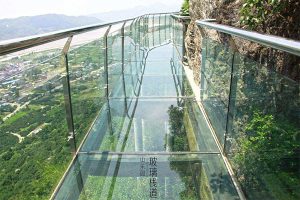
In addition, the price of SGP is more than three times that of PVB.